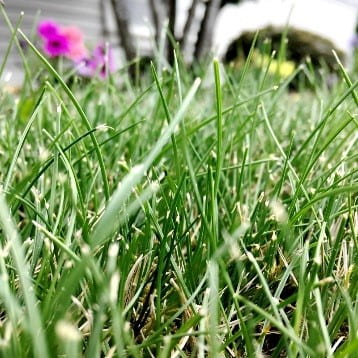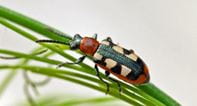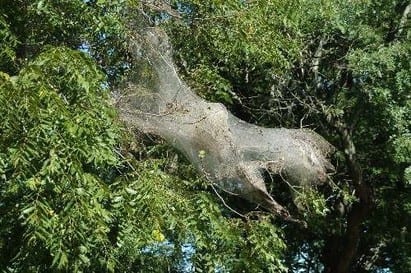If you are growing asparagus, then it is that time of year to be aware of the only insect pest o f asparagus; the common asparagus beetle. Adult beetles are only 1/4 inch long. Adults emerge from the soil in early spring and fly to new asparagus shoots where they mate and feed. Females lay up to 30 eggs on the end of spear tips as they emerge from the soil.
f asparagus; the common asparagus beetle. Adult beetles are only 1/4 inch long. Adults emerge from the soil in early spring and fly to new asparagus shoots where they mate and feed. Females lay up to 30 eggs on the end of spear tips as they emerge from the soil.
Common asparagus beetles overwinter underneath plant debris, loose bark, or hollow stems of old asparagus plants. The life cycle can be completed in eight-weeks. There are two generations in Kansas. The adults and larvae feed on asparagus spears and can defoliate ferns if populations are extensive. Larvae consume leaves and tender buds near the tips, which leaves scars that eventually turn brown. Damage caused by larvae interferes with the plant’s ability to photosynthesize (manufacture food); thus, depleting food reserves for next year’s crop.
To help protect your asparagus patch from beetles: applying insecticides; handpick eggs, adults, and larvae and place into a container with soapy water; and/or remove any plant debris after the growing season to eliminate overwintering sites for adults. Insecticides should be applied as soon as common asparagus beetles are present, and again in late summer through early fall to kill adults before they overwinter. Thorough coverage of all plant parts is important in suppressing populations.
By: Cassie Homan
 Chiggers are mites, not insects. And like all mites, the adults have eight legs. However, the larva only has six legs.
Chiggers are mites, not insects. And like all mites, the adults have eight legs. However, the larva only has six legs. If you are growing asparagus, then it is that time of year to be aware of the only insect pest of asparagus; the common asparagus beetle. Adult beetles are only 1/4 inch long. Adults emerge from the soil in early spring and fly to new asparagus shoots where they mate and feed. Females lay up to 30 eggs on the end of spear tips as they emerge from the soil.
If you are growing asparagus, then it is that time of year to be aware of the only insect pest of asparagus; the common asparagus beetle. Adult beetles are only 1/4 inch long. Adults emerge from the soil in early spring and fly to new asparagus shoots where they mate and feed. Females lay up to 30 eggs on the end of spear tips as they emerge from the soil. Fall webworm feeds on almost all fruit, shade, and ornamental trees except conifers. This insect is present more often on trees that are not surrounded by other trees. The larvae begin by constructing small webs near the ends of branches. The insect will gradually increase the size of the web as the need for food increases.
Fall webworm feeds on almost all fruit, shade, and ornamental trees except conifers. This insect is present more often on trees that are not surrounded by other trees. The larvae begin by constructing small webs near the ends of branches. The insect will gradually increase the size of the web as the need for food increases. Squash bugs are the grey, shield-shaped bugs that feed on squash and pumpkin plants. If you have had problems with these insects in the past, you know that they are almost impossible to control when mature. This is because the squash bugs have a hard body that an insecticide has difficulty penetrating. Thus, spraying when the insects are small is important. We are now seeing the nymphs of the first generation. These nymphs will eventually become adults, which will lay eggs that will become the second generation. The second generation is often huge and devastating. Therefore, it is important to control as many squash bugs now as possible.
Squash bugs are the grey, shield-shaped bugs that feed on squash and pumpkin plants. If you have had problems with these insects in the past, you know that they are almost impossible to control when mature. This is because the squash bugs have a hard body that an insecticide has difficulty penetrating. Thus, spraying when the insects are small is important. We are now seeing the nymphs of the first generation. These nymphs will eventually become adults, which will lay eggs that will become the second generation. The second generation is often huge and devastating. Therefore, it is important to control as many squash bugs now as possible.
